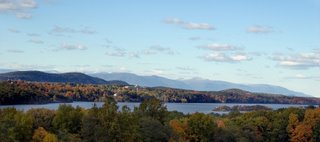Blue Arabesque--NY Times Review
Patricia Hampl's new memoir "Blue Arabesque"--justifiably called so, since she defines memoir as the story of a mind, not a life--received a grand review in the October 29 Book Review section (available now to online subscribers).
Kathryn Harrison compares Hampl's analysis of her aesthetic experiences to those of John Berger in "Ways of Seeing," and Susan Sontag in "On Photography."
Patricia Hampl’s determination to occupy the space between the eye and its object and her success at articulating the mysterious transactions therein grants her authority among writers like Berger and Sontag, who not only sit and stare but see. Read “Blue Arabesque” and you too might mistake — or exchange — art museums for churches.
I'm eager to read this after having the honor this summer of studying with Patricia at the Prague Summer Program. The other two books of hers that I've read, "A Romantic Education" and "I Could Tell You Stories," are now two of my best-loved reads. If her exploration of Matisse is anywhere near as exalted as what she accomplished with Czeslaw Milosz in "I Could Tell You Stories," then I am sure to be taken beyond the walls of my minor-league mind.
Here's an example of her thinking on why Milosz's memoir "A Native Realm" differs so much from American work:
The American assumption is almost always psychological, and therefore personal. There is a throb toward (personal) salvation beating within American autobiography. Milosz's assumption is superficially cooler, harder. Put another way, it is more elemental. For him, the awareness of a rich and complex "origin" necessarily dilutes some of the paralyzing power of the present: something else is always tugging at consciousness, something neither wholly familiar nor wholly abstract. This presence which lies at the heart of the experience of memory is both personal and impersonal. This double nature of his memory, which Milosz says caused his post-War experience in the West to be "robbed" of some of its "reality," is, from an American middle-class perspective, an enriching and intensifying of reality. (from "Czeslaw Milosz and Memory" from "I Could Tell You Stories")Be kind to yourself and allow this brilliant memoirist to push your thinking, seeing, and feeling into the realm of the divine.















